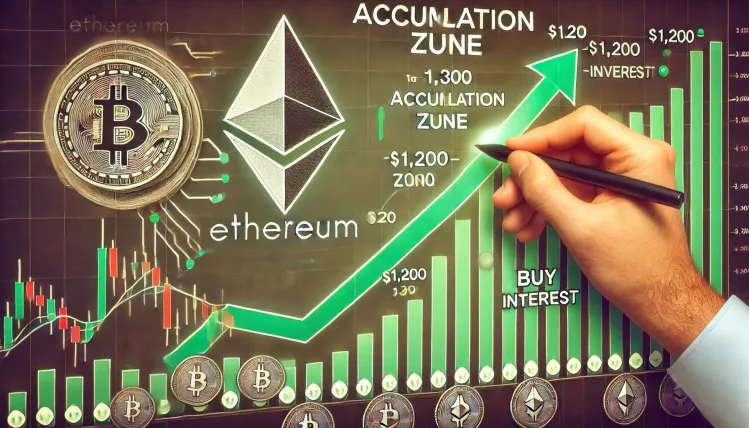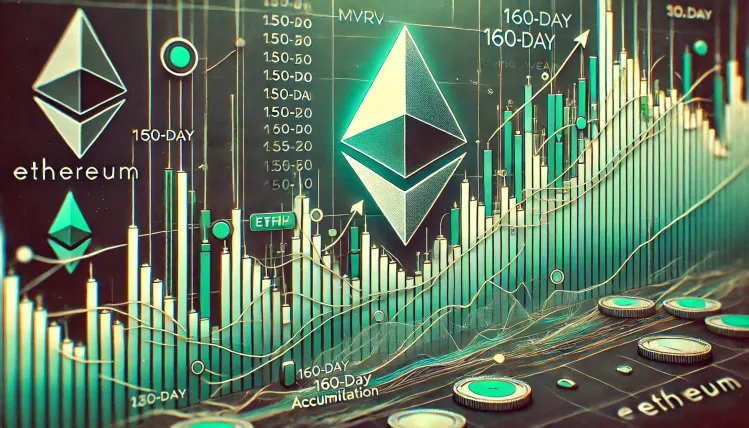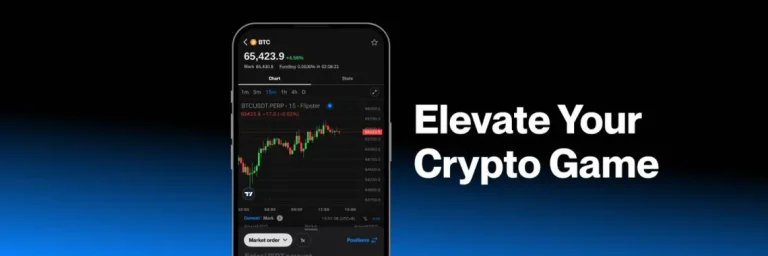
Ethereum (ETH) is under close scrutiny as analysts identify a critical price range between $1,200 and $1,300 as a potential acquisition zone. This level, considered a key accumulation area, could attract buyers if Ethereum experiences a correction. With macroeconomic uncertainty and broader market volatility impacting the crypto landscape, investors are eager to determine whether ETH will reach this level and what it could mean for future price action.
Ethereum’s Current Market Landscape
Ethereum has experienced significant fluctuations in recent weeks, reflecting the overall instability in the cryptocurrency market. While ETH has demonstrated resilience, key support and resistance levels continue to shape investor sentiment.
Several factors contribute to Ethereum’s price movements:
- Macroeconomic Conditions: Interest rate policies, inflation trends, and global economic stability influence investor behavior in risk assets like Ethereum.
- Bitcoin’s Performance: As the dominant cryptocurrency, Bitcoin’s price action often sets the tone for Ethereum and the broader altcoin market.
- On-Chain Activity: Ethereum’s network health, including transaction volume, staking participation, and DeFi activity, plays a crucial role in determining price trends.
Why Is $1,200-$1,300 Seen as a Key Zone?
Historically, the $1,200-$1,300 range has acted as a strong support level for Ethereum. During previous market downturns, ETH has found stability in this zone before rebounding. Analysts believe this level remains relevant for several reasons:
- Historical Support: Ethereum has tested this price range multiple times, making it a significant technical area.
- Accumulation Potential: Long-term investors may view this level as a prime buying opportunity.
- Risk-Reward Ratio: If Ethereum drops to this zone, the risk-to-reward ratio could become attractive for those anticipating a long-term bullish recovery.
Possible Scenarios for Ethereum’s Price Action
- Ethereum Holds Above Support and Rebounds
- If Ethereum retraces toward $1,200-$1,300 and finds strong buying interest, it could signal an accumulation phase.
- A bounce from this level could propel ETH back above $1,500 and beyond, depending on broader market conditions.
- Ethereum Breaks Below Support
- If ETH fails to hold this range, it could indicate further downside pressure, with the next major support level around $1,000.
- A break below $1,200 could trigger stop-loss orders, accelerating a sell-off.
- Sideways Consolidation in the Acquisition Zone
- If Ethereum enters the $1,200-$1,300 range but lacks strong momentum in either direction, it may consolidate before a decisive move.
- This scenario would depend on external catalysts, such as regulatory developments or macroeconomic shifts.
Market Indicators to Watch
Investors should keep an eye on the following indicators to gauge Ethereum’s potential movement:
- Relative Strength Index (RSI): If ETH enters oversold territory, it could signal a buying opportunity.
- Trading Volume: Increased volume at the $1,200-$1,300 range could indicate accumulation.
- Ethereum Staking and DeFi Activity: A rise in staking participation or DeFi engagement could boost confidence in ETH’s long-term value.
Conclusion: Is the $1,200-$1,300 Zone an Ideal Entry Point?
Ethereum’s price trajectory remains uncertain, but the $1,200-$1,300 range presents a potential opportunity for long-term investors. Whether ETH rebounds from this level or faces further declines will depend on market sentiment, technical support, and macroeconomic influences.
For now, traders and investors should closely monitor Ethereum’s price action and key indicators to determine if this acquisition zone holds or if further downside risks emerge. As market dynamics evolve, the coming weeks will be crucial in shaping Ethereum’s next major move.






